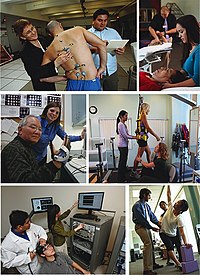
Photo from wikipedia
Background Longevity is increasing, accompanied by a rise in disability and chronic diseases with physical activity (PA) delaying disability, ensuring successful ageing (SA) and independent living in older adults. Aim… Click to show full abstract
Background Longevity is increasing, accompanied by a rise in disability and chronic diseases with physical activity (PA) delaying disability, ensuring successful ageing (SA) and independent living in older adults. Aim This study aimed to determine objectively measure PA levels, health-related quality of life (HRQoL), life-space mobility and SA of older adults as well as their mutual associations. Setting KwaZulu-Natal province, South Africa. Methods A total of 210 older adults aged 65–92 years were purposively sampled and completed the Medical Outcomes Study 36-Item Short-Form Health Survey, the Life-Space Mobility, and Successful Ageing questionnaires. Physical activity levels were measured using an Omron Pedometer, which the participants wore for seven consecutive days. Results The average number of steps taken per day for the 7 days was 2025, with 98.6% of the entire study population classified as sedentary. The Vitality domain (one of 8 categorised) reflected the best health status (M = 59.9, s.d. ± 18.8) with a significant 93% of the participants indicating that they had not visited places outside their immediate neighbourhood (p < 0.0005). A significant, negative association between the average number of steps taken in 7 days and all three SA variables, namely, the physical (r = –0.152, p = 0.027), sociological (r = –0.148, p = 0.032) and psychological (r = –0.176, p = 0.010), and a significant, positive association with life-space mobility (r = 0.224, p = 0.001) was noted. Conclusion The majority of the older adults were sedentary, affecting their HRQoL, life-space mobility, and SA negatively. Contribution It is imperative to develop effective physical activity programmes to ensure successful ageing by improving older adults’ quality of life and physical activity levels.
Journal Title: Health SA Gesondheid
Year Published: 2022
Link to full text (if available)
Share on Social Media: Sign Up to like & get
recommendations!